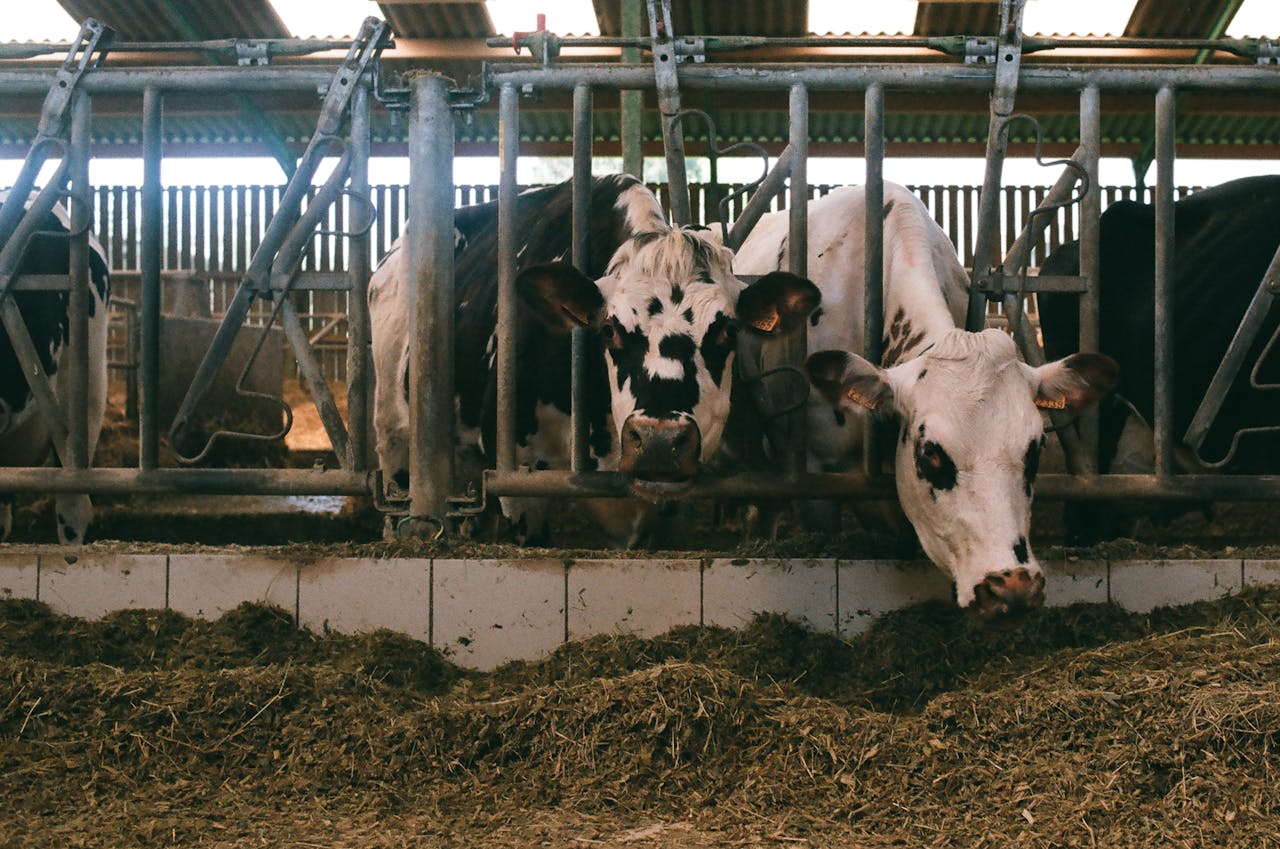Feeding a projected 9.7 billion people by 2050 demands major gains in resource efficiency. Livestock feed already accounts for roughly 45% of the sector’s total greenhouse-gas emissions. Feed circularity – re-using nutrients from non-food-grade materials through animal diets – offers a science-based route to meet global protein demand without expanding land, water, or energy use.
Circular feed systems upcycle organic matter into high-quality ingredients that replace virgin raw materials.
Rendered animal by-products recover proteins and fats from inedible tissues, preventing millions of tonnes of organic waste from entering landfills. Life-cycle analyses show that biodiesel from rendered fats achieves 79-86% lower GHG emissions than petroleum diesel. Rendered proteins supply digestible amino acids, calcium, and phosphorus, while rendered fats deliver concentrated energy and enhance feed palatability.
Plant-based co-products further close nutrient loops. Soybean meal – the by-product of oil extraction – provides a balanced amino-acid profile and high digestibility. Distillers dried grains with solubles (DDGS), a co-product of bioethanol production, returns cereal nutrients to the feed chain. Including DDGS at 15-20% in swine diets can reduce the carbon footprint of pork by 8-12%. Both reduce dependence on food-grade crops and make more efficient use of arable land.
Feed efficiency, processing, and circularity
Feed conversion ratio (FCR) links directly to environmental impact: every 10% improvement lowers livestock emissions by roughly 7-10%. Combining animal and plant-based co-products optimises amino-acid balance and nutrient digestibility, improving nitrogen retention and reducing excretion losses. It has been estimated that replacing 15% of energy-rich feed crops with rendered materials could save ≈28 million ha of farmland and 138 km³ of water globally.
Circularity gains depend not only on formulation but also on processing efficiency – how effectively nutrients are converted into stable, digestible pellets. Pellet durability, fines generation, and thermal damage all affect nutrient recovery and downstream performance.
Peer-reviewed research has established the mechanistic basis for moisture milling efficiency aids which utilise surfactants. It has been shown that surfactant-based technologies can improve moisture penetration, heat transfer and starch gelatinisation during conditioning. These improvements increase pellet durability index (PDI), reduce fines, and enhance bird performance. The research confirms that better conditioning translates into higher feed efficiency and lower process energy.
Building on this mechanistic understanding, surfactant-based milling aids have been evaluated in commercial feed processing applications. Trade-trial data from the International Research Institute of Feed Technology demonstrated that inclusion at approximately 1% improved conditioning rate, PDI, and cooling moisture retention, while reducing friction temperature and energy demand. Field trials in aquafeed extrusion using Maxi-Mil reported approximately 10.6% higher throughput, 12.5% lower energy use, and 1.1% greater moisture retention without compromising pellet stability.
These outcomes illustrate how process aids can amplify the sustainability benefits of feed circularity by reducing waste, protecting nutrient integrity, and lowering mill energy intensity.
Rendering as a model of safe circularity
Rendering exemplifies how waste recycling and food safety intersect. Thermal processing destroys pathogens such as Salmonella and Campylobacter, producing microbiologically safe proteins and fats. Yet post-processing contamination during storage or transport can compromise safety. Feed sanitisers, such as Termin-8 and Finio, have been shown to suppress Salmonella typhimurium for at least 14 days, maintaining low microbial load in feed and feed ingredients. Such controls extend the benefits of circularity while protecting feed quality and animal health.
Integrating circular feed principles
A robust circular feed framework rests on 4 technical pillars:
- Non-food-grade input utilisation – prioritise co-products and by-products over edible grains.
- Local resource loops – co-locate feed mills with rendering, crushing, or ethanol facilities to minimize transport emissions.
- Maximised nutrient recovery – apply enzymatic hydrolysis, fermentation, or precision formulation to improve digestibility and reduce nitrogen and phosphorus waste.
- Biosecurity and quality assurance – use validated thermal and chemical interventions plus standardised monitoring to prevent pathogen resurgence and maintain feed safety.
Feed circularity provides the technical blueprint for closing nutrient loops in livestock production. By combining rendered animal proteins, soybean and canola meals, DDGS, and advanced processing and hygiene technologies, the industry can simultaneously improve feed efficiency, reduce waste and protect environmental and animal health. Evidence from both peer-reviewed studies and applied industrial trials confirms that circular feed strategies are measurable, scalable, and essential to producing safe, sustainable protein for a growing world.
Anitox supports feed manufacturers in maximising the safety and efficiency of circular feed systems. Our portfolio includes research-backed process aids like Maxi-Mil to optimise pellet quality and throughput, and proven feed sanitisers such as Termin-8 and Finio to protect against pathogen contamination throughout the supply chain. To learn more visit www.anitox.com.
References are available on request.

